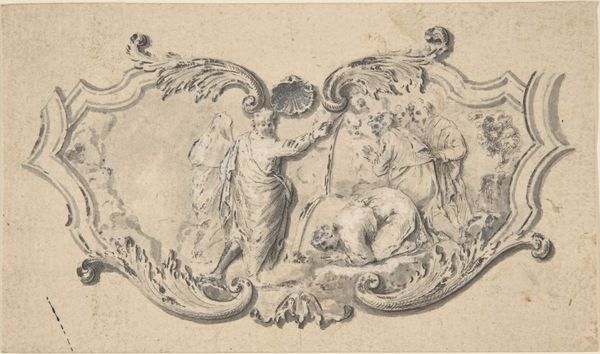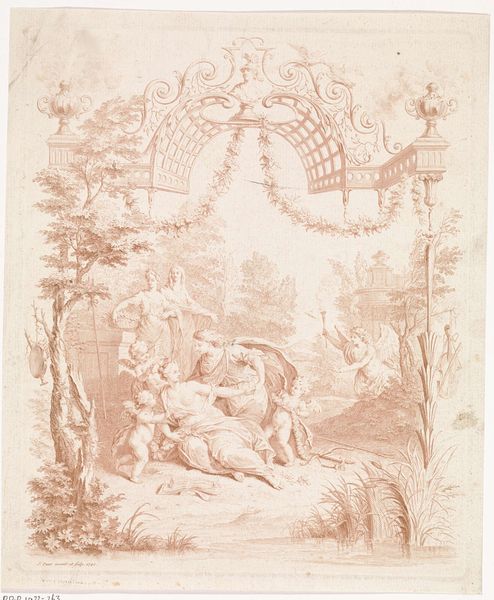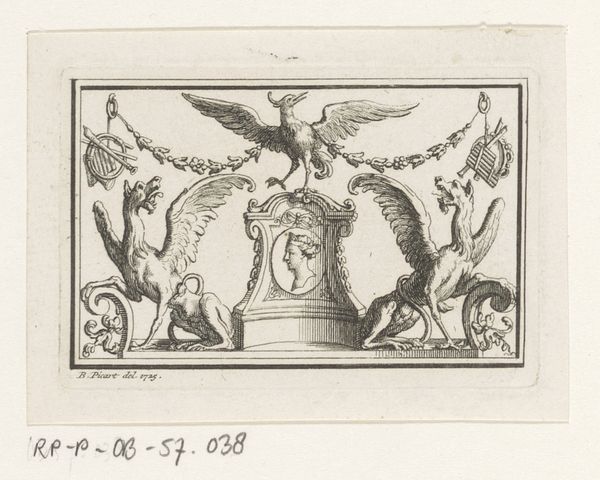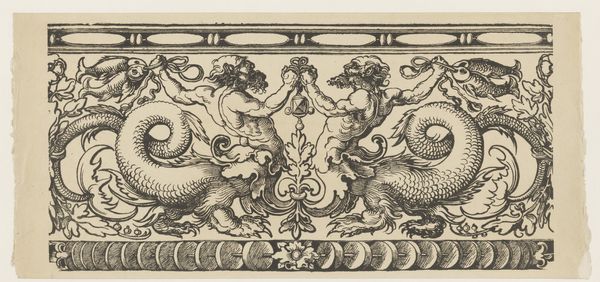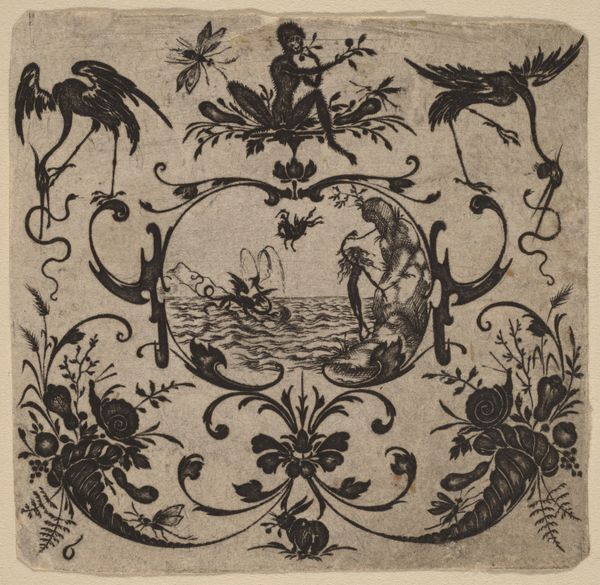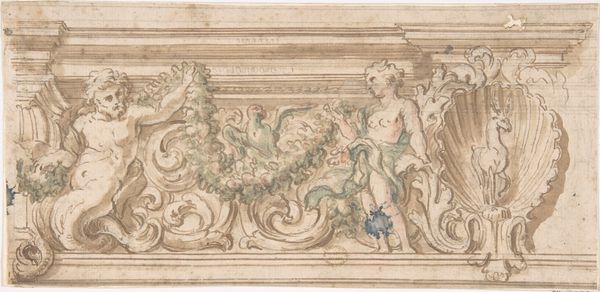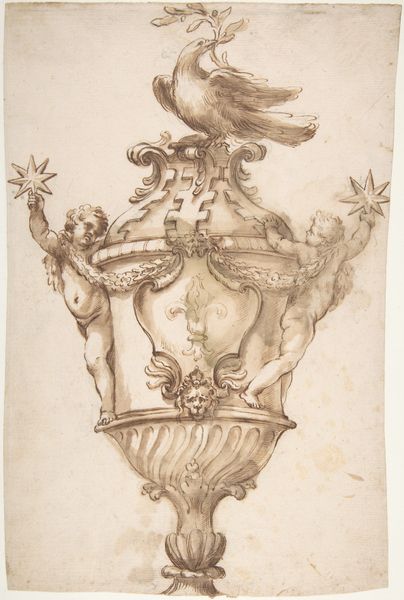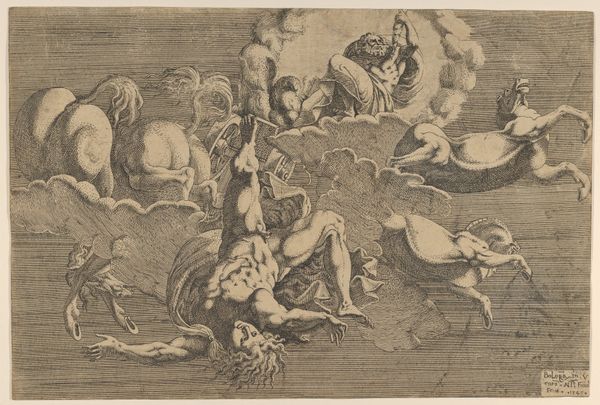
Wine Cooler or Vase on a Classical Pedestal 1784
0:00
0:00
drawing, print, etching, engraving
#
drawing
#
neoclacissism
#
allegory
#
ink painting
# print
#
etching
#
landscape
#
classical-realism
#
bird
#
flower
#
vase
#
form
#
line
#
history-painting
#
engraving
Dimensions: 12 1/2 x 18 15/16 in. (31.8 x 48.1 cm)
Copyright: Public Domain
Curator: Immediately, I'm struck by the idealized and almost aggressively decorative qualities of this print. It’s teeming with classical motifs, bordering on the baroque in its profusion of detail. Editor: I'd like to introduce this work. We're looking at Aubert Henri Joseph Parent's "Wine Cooler or Vase on a Classical Pedestal," created in 1784. It employs engraving, etching, and printmaking techniques. Considering Parent lived through immense social upheaval, how might we interpret these classical allusions? Curator: Knowing the date helps contextualize this within the rising revolutionary spirit. The rigid formality feels like a conscious attempt to evoke a sense of order, perhaps a yearning for the stability of the Roman Empire. It’s a visual argument, steeped in political anxieties, but also patriarchal fantasies of the time. Editor: Absolutely, it's tempting to read these symbols allegorically, especially the winged figure emerging from the vase itself. This bust with wings almost certainly carries emotional or cultural memory from classical ideals about both wisdom and triumph. The vase becomes an emblem of power, aspiration, perhaps the very soul of civilization, struggling to ascend. Curator: Yes, but it's also profoundly exclusive, isn’t it? These symbols, these classical allusions, spoke to a very select segment of society—an elite educated in these precise visual codes, meant to reinforce power structures. Editor: I can see how the bird’s nest could reflect new beginnings, hope, or love, set against the framed, sculptural struggle for sustenance—is it an early visual reference about labor? There’s something unnerving to it as the rose branches act almost like thorny tendrils reaching to bind them. Curator: And there’s something deeply ironic, right? Presenting an image of serene classicism produced through an art form—printmaking—that was inherently democratizing. Think of how revolutionary imagery was spread. It really underlines the contradictions present in Parent's world. Editor: Yes. This dance between past and future creates new space between the figures on display and their potential audience. Curator: Ultimately, examining Parent's print pushes us to question whose stories are preserved and who controls the visual narratives. Editor: By deconstructing these intricate images, we unveil historical, cultural, and deeply personal resonances. Thank you.
Comments
No comments
Be the first to comment and join the conversation on the ultimate creative platform.


